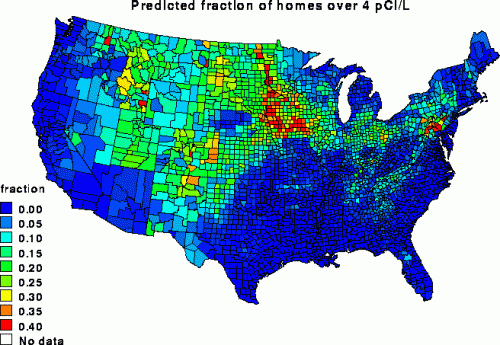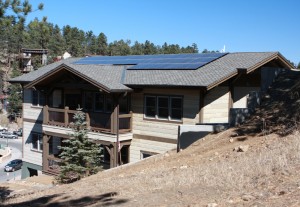With two of our offices in Colorado, we come across a very common problem with Radon in basements of homes.
Radon is a radioactive gas that is present in soils with a high degree of mineral variety. In Colorado, the soils in most geologic zones present the very environment for higher levels of radon to be present. Radon gas is heavier than air, and therefore settles in the lowest areas of a home. As a result, many of our basements wind up with very high radon levels.
Nearly all homes have radon present, however, that does not necessarily present a health hazard. According to the EPA, radon levels under 4.0 pCi/L are considered safe for habitation without any need for mitigation. Well ventilated spaces tend to have fewer issues with radon levels (this is why during a radon test, all windows and doors to the outside must remain closed). However, because of Colorado’s colder climate, many basements are closed up much of the year. For homes with finished basements, a radon test is highly advised.
So what can you do? The best course of action is to address it in the initial design of the home, however, existing homes can also be mitigated. The most effective approach is to install a radon mitigation system. While that name sounds terribly intimidating, it is actually a fairly simple and low-tech solution for a common problem.
The basic assembly is this:
- You start by core drilling a hole through the lower level slab, or the lower level structural floor.
- Then, a pipe (typically pvc plastic) would be inserted into the sub-floor space and would run continuously up and out through the roof of the home.
- An in-line fan can be installed in the pipe that would create negative pressure in the sub-slab space. This system would evacuate the sub-floor air (where the settling radon would be present) and exhaust it outside of the home.
Note: If the soil below the slab is not gravel or a soil type that would allow for good air movement, the effectiveness of the assembly is reduced, however it is still not rendered ineffective.
For more about radon, you can check out the EPA literature . Any home inspection company can provide radon testing and the cost for the test runs around $150 dollars.










2 thoughts on “What to Know About Radon in your Home”
Pingback: What is Radon? – A Closer Look
Pingback: All About Radon | Radon Gas Detectors - Keep it safe
Comments are closed.